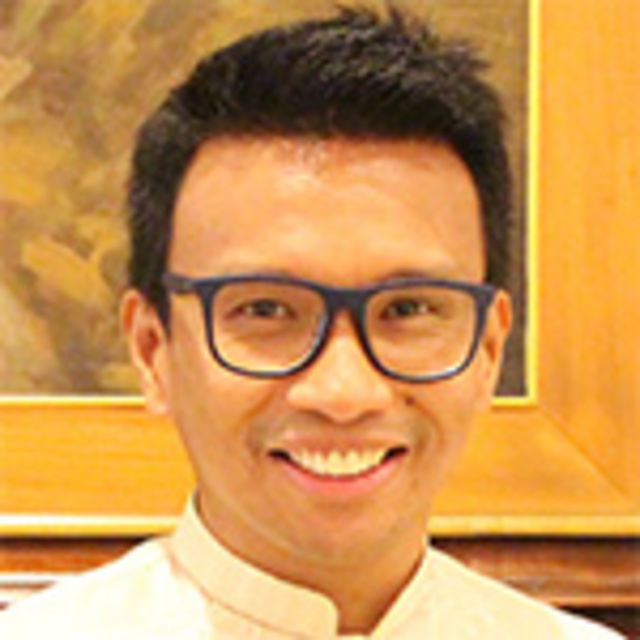

Are they going to make a difference?
Many advocates hope so.
Voters between 18-30 years old constitute 31% of the registered electorate. We’re talking about 18.8 million young Filipinos who can sway the senatorial elections.
No wonder advocates are rooting for them.
Disappointed with survey results, they turn to university-based mock elections to show that the youth know better. It is, after all, the unusual names who make it to the top. Diokno, Colmenares, and Gutoc are among the favorites in these student-sponsored mock elections.
But what about the rest of the youth? We need to get this right.
Survey shows
To make my case, I will draw from Pulse Asia’s recent survey, conducted from April 10 -14. My colleagues there have been helpful in disaggregating the data according to age brackets.
Two age brackets cover the youth demographic: 18-24 years old and 25-34 years old.
The figures below are derived from the likely voters among survey respondents. The survey allowed for multiple responses, up to 12 names. This explains why the figures do not add up to 100%.
| Candidate | % | Candidate | % |
| Lapid | 67.5 | Villar | 56.3 |
| Poe | 56.0 | Lapid | 56.1 |
| Go | 46.8 | Cayetano | 47.5 |
| Bong Revilla | 45.7 | Poe | 46.7 |
| Villar | 45.5 | Angara | 46.7 |
| Pimentel | 42.7 | Binay | 46.1 |
| Cayetano | 41.6 | Go | 43.7 |
| Dela Rosa | 39.6 | Bong Revilla | 42.2 |
| Angara | 38.2 | Dela Rosa | 41.2 |
| Estrada | 35.1 | Marcos | 38.7 |
| Binay | 31.5 | Ejercito | 35.3 |
| Roxas | 30.6 | Estrada | 27.0 |
| Aquino | 30.2 | Aquino | 26.3 |
| Gadon | 24.1 | Osmeña | 25.7 |
| Tolentino | 23.9 | Pimentel | 23.7 |
| Ejercito | 21.0 | Tolentino | 23.3 |
| Colmenares | 20.4 | Roxas | 20.4 |
| Osmeña | 20.0 | Enrile | 16.7 |
What do we see?
Both age groups share 16 of 18 top candidates.
They are voting for Lito Lapid, Grace Poe, Bong Go, Bong Revilla, Cynthia Villar, Koko Pimentel, Pia Cayetano, Bato dela Rosa, Sonny Angara, Jinggoy Estrada, Nancy Binay, Mar Roxas, Bam Aquino, Francis Tolentino, JV Ejercito, and Serge Osmeña.
10 of these 16 are from Hugpong ng Pagbabago. Only two are from Otso Diretso.
All 7 incumbents running for reelection are included. Four are former senators hoping for a comeback, two of whom were involved in the PDAF scam.
And most importantly, all 16 are in the overall top 18 of Pulse Asia’s most recent survey.
In other words, the Filipino youth are slated to vote for exactly the same group of people as everybody else.
What this means is that the mock elections among university students do not reflect the overall voting preferences of their peers.
What it also means is that the idealism accorded to young people might all be wishful thinking.
Not even the presence of Colmenares among 18-24 year old voters will make a difference. And think about it: Gutoc, Ka Leody, and Diokno, social media rock stars for their fiery speeches, are nowhere on the list.
Those who bet on the youth and their positive impact on the elections will be disheartened to discover the truth.
Perhaps the only redemption is that there is no solid youth vote for Larry Gadon, who thinks everyone is bobo and for Imee Marcos, who thinks she has academic credentials.
What do we do?
To be honest, these figures are all too difficult to accept. Inasmuch as we believe that the youth can make a positive difference, the signs show otherwise.
They are poised to vote for candidates who represent the worst in our democracy: dynasties and political opportunists.
The “woke” among us might end up just blaming them. To do that though is a mistake. Remember that they simply echo the voting preferences of everybody else.
But for now, against all odds, maybe it’s not yet too late.
While time is running out, we can treat these numbers as a call to action. We can devote the remaining days to mobilize the youth in our communities and make sure that they go out and vote.
Believers of the youth vote, however, must make an effort to engage those outside their echo chambers. Based on Pulse Asia’s recent survey, only 35% of voters have a complete slate. Opportunities therefore still exist for alternative candidates.
Finally, there is a long-term lesson here. Education makes a difference to one’s political preferences. That university-based mock elections reveal radical choices is indicative. Imagine the political potential of a highly educated youth sector.
But theirs cannot just be any kind of education. It must be one that provides them with the space to critically imagine a just future. And it must empower them to speak truth to power.
Too bad then that many schools and universities treat the liberal arts as tiresome add-ons. The adults among us must not give up on helping our youth discover what they can really do for the future of our country. – Rappler.com
Jayeel Cornelio, PhD is the Director of the Development Studies Program at the Ateneo de Manila University and a fellow of Pulse Asia. He is the editor of the forthcoming volume “Rethinking Filipino Millennials: Alternative Perspectives on a Misunderstood Generation”. Follow him on Twitter @jayeel_cornelio.